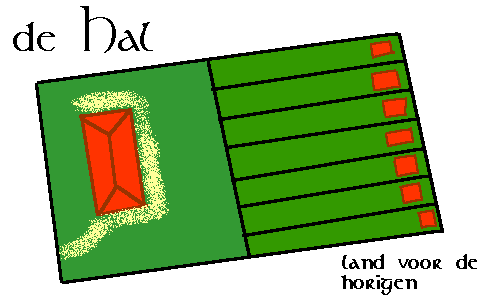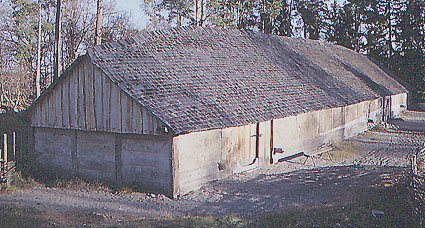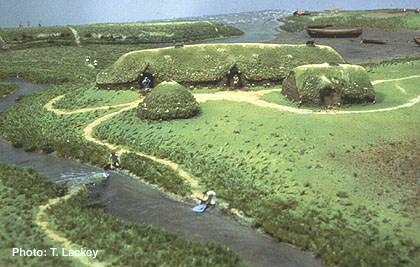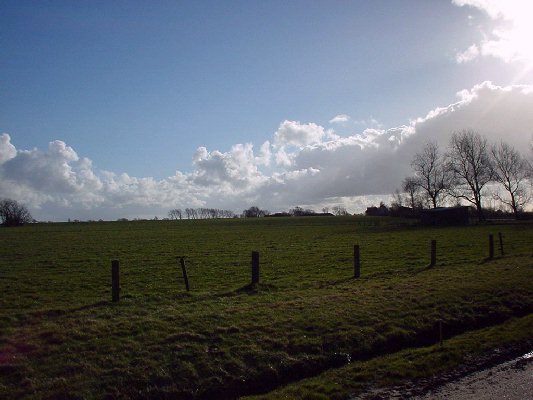
Last change:
30-3-2000;
reactions?
e-mail me
The history of Wieringen
the Middle Ages
6. A viking settlement on Wieringen?
As said on one of the previous pages Frisia - the entire coastal area of the present day Netherlands - suffered under continuous Viking invasions for most of the 9th century. As a way of restoring law and order at the borders of the empire the Frankish king gave most of Frisia as a fief to the Danish warlords. The king wanted to pacify the Danes by making them part of the Frankish society. The main Danish warlord of that time was called Rorik, and it is thought that his vassals settled on Wieringen. Their main task was to control the traderoute, but the two silvertreasures indicate that they did more. Trade for instance and perhaps they even considered making Wieringen a colony, like their compatriates did in England.
At the location of present Westerklief there must have been an important settlement. A first clue was found in a preliminary fieldnames investigation, based on Jo Daan's book "Wieringer Land in Leven en de Taal" (Land of Wieringen in life and language) that includes a complete list of all the old lotnames. At the height of Westerklief a number of plots used to be known as "De Hal" (the hall). This is the old Danish / Frisian name for homestead or farmstead, as we saw on a previous page the centre of the Carolingian rural society. The old pattern of lots from before the re-allotment is in accordance with this, eventhough the pattern has become diffuse because of land divisions during the later 10 centuries. For details look at the map (beware: large images = long download time).
 | The way a homestead was allotted in the early middleages was as follows: A piece of land was cleared. After that it was divided in two equally sized parts. On one part the Lord build his house, the hall, which served as some sort of community centre as well. The remaining land on this part was being worked for the lord by his serfs. The second part was again divided in small strips that were given to the serfs. They could build a little hut here and work the land for themselves. Part of the yields - one tenth - had to be given to the Lord, and the serf had to work for some time on the land of the Lord. The uncultivated land around the settlement was part of the settlement nevertheless. It was used for wood and hunting. |
Two examples of reconstructed viking settlements. The way the houses were built differed per region, depending on the available material and the part of Scandinavia the builders came from. The first photo shows a reconstruction of a "hall" like they were built in South Sweden, the second is a model of the settlement in L'Anse aux Meadows, Newfoundland Canada. The basic shape of the large house is the same. The Hall at Westerklief must have looked like this. What the roofcovering was, planks or sods of turf, is unclear.


Anyone who is interested what life on such a hall was like, should read the old-English epic poem Beowulf. It was written down in the 10th century and is set in 9th century England under the Danish occupation. Despite its English setting, the way of life is comparable to that in 9th century Frisia. Download Beowulf (62 kB zipped).

The height of Westerklief nowadays
Now the time has come for thorough archeological research that should make clear how important Wieringen really was in the 9th and 10th century. The remnants of an older church underneath the present church of Oosterland an the two Viking treasures are good first indications. Who knows what is still buried, waiting to be discovered. As could be expected, the wave of media attention that followed the discovery of the treasures drew large numbers of treasurehunters to Wieringen. The local authorities have declared that illegal digging is strictly forbidden.